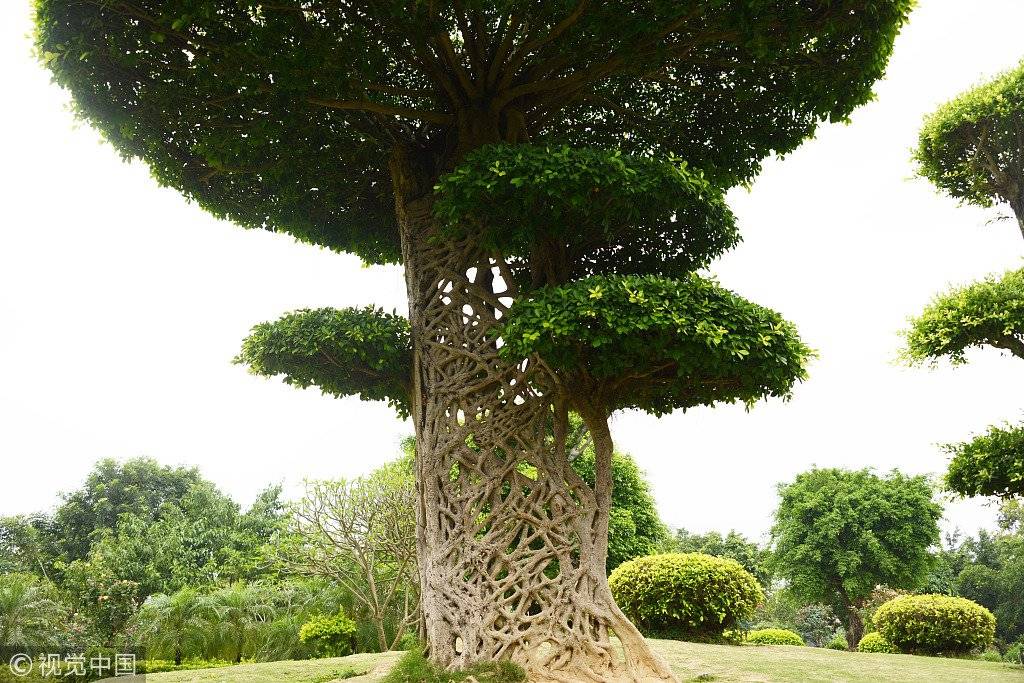Hidden within the lush landscapes of Nanning, Guangxi, China, lies a remarkable tree known locally as the “Spider’s Web” or the “Strangler Fig.” Its branches, entwined and knotted in an intricate and mesmerizing pattern, present a natural wonder that has captured the imagination of all who encounter it.
The Strangler Fig, scientifically classified under the Ficus genus within the Moraceae family, is a tropical marvel known for its distinctive growth habit. These trees, aptly named for their strangulation-like embrace of host trees, often lead to the eventual demise of their unwitting companions. They are a common sight in tropical forests across the globe, where they establish their dominance by encircling and engulfing host trees. While their behavior may seem parasitic, there’s an intriguing aspect to their relationship with their hosts. Evidence suggests that trees enveloped by strangler figs may possess a greater ability to withstand the ravages of tropical cyclones, hinting at a possible mutualistic interaction. These plants are self-sustaining, relying on photosynthesis rather than their hosts for nutrients.
The Spider’s Web Tree in Nanning, China, stands as a testament to nature’s intricate design and unyielding creativity. Its branches form a captivating tapestry, blending artistry with the resilience of the natural world. While its appearance may seem eerie and mysterious, it serves as a reminder of the wondrous and enigmatic facets of our natural surroundings.



















